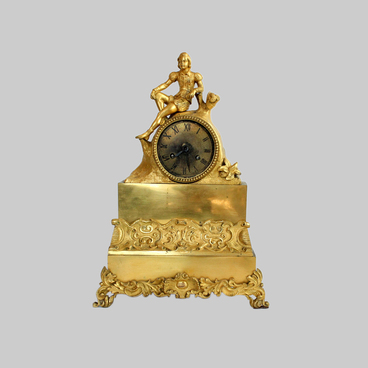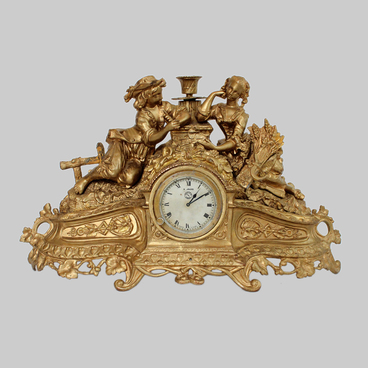In the 19th century, candlesticks were common objects in any home, since in those days candles were the only way to illuminate rooms, and candlesticks were necessary in order to securely hold burning candles and carry them when needed. Candlesticks were first used as holders and any suitable material was used in making them including wood, stones or metal. But over time, the aesthetic appearance of the candlestick become more important. Soon they were made with a special beauty, a certain grace, including floral ornaments, curls and animal figures.
If it was necessary to move around with a flame in hand, they used small stands of a small size and height, with a handle and a wide tray-saucer that collected dripping wax. Large items with multiple candle holders were used on writing desks and during meals. There were also very small dressing table accessories.
For many centuries, candlesticks have been ubiquitously made of metal: steel, bronze, and brass. In the houses of wealthy families and the imperial family, candlesticks were cast from precious metals or covered with gold leaf.
In the 19th century, candlesticks were also made of cast iron. This metal had many advantages including strength, reliability, and most importantly, an affordable price. Later, marble and alabaster were used as well. However these products were only used to illuminate churches and homes of the wealthy. After several decades, candelabra learned to use porcelain, crystal, as well as colored and transparent glass. Both their style and material compound were fashionable at the time.
The candlestick on display here dates back to the 19th century. It is made of bronze. The candlestick can be assembled from four different parts. These parts were fastened together using a screw thread. The surface of the candlesticks is embossed and covered with floral ornaments. The cone-shaped base with a curly edge rests on three legs. The candlestick itself is shaped like an unblown bud.
If it was necessary to move around with a flame in hand, they used small stands of a small size and height, with a handle and a wide tray-saucer that collected dripping wax. Large items with multiple candle holders were used on writing desks and during meals. There were also very small dressing table accessories.
For many centuries, candlesticks have been ubiquitously made of metal: steel, bronze, and brass. In the houses of wealthy families and the imperial family, candlesticks were cast from precious metals or covered with gold leaf.
In the 19th century, candlesticks were also made of cast iron. This metal had many advantages including strength, reliability, and most importantly, an affordable price. Later, marble and alabaster were used as well. However these products were only used to illuminate churches and homes of the wealthy. After several decades, candelabra learned to use porcelain, crystal, as well as colored and transparent glass. Both their style and material compound were fashionable at the time.
The candlestick on display here dates back to the 19th century. It is made of bronze. The candlestick can be assembled from four different parts. These parts were fastened together using a screw thread. The surface of the candlesticks is embossed and covered with floral ornaments. The cone-shaped base with a curly edge rests on three legs. The candlestick itself is shaped like an unblown bud.



